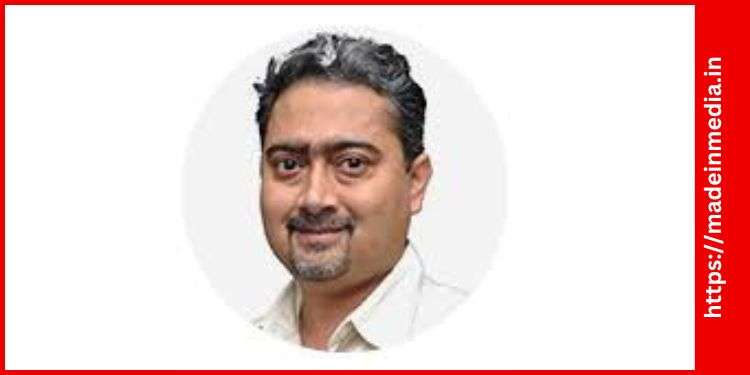Citizens cite religious, cultural experience, to meet holy men, social gathering, curiosity, as top reasons for interest in the religious fest, Maha Kumbh Mela seen to boost local economy. Concern around the impact on environment surfaces
Mumbai: The Prayag Maha Kumbh Mela 2025, underway in Prayagraj, Uttar Pradesh, a Hindu pilgrimage festival is perceived as a symbol of preserving cultural and religious traditions, by at least 74% of urban Indians polled. This is also significant as while the Kumbh Mela is held every 12 years, Maha Kumbh Mela marks the completion of a 12 Kumbh Mela cycle – a once in 144 years occurrence, celebrated over 45 days.
Interestingly, familiarity about the Maha Kumbh Mela was seen to be high among citizens with 42% being familiar and 32% claiming to be somewhat familiar. Though 26% were unfamiliar about the religious mega event.
“Government has gone all out to build awareness around the Maha Kumbh Mela, given its once in 144 years occurrence and the religious significance of purifying one’s soul through the holy dip at the confluence of the holy rivers of the Ganges, Yamuna and Saraswati – the Triveni ghat, for attaining moksha/ liberation, through the Amrit Snan and Shahi Snan. And to encourage devotees to visit Prayagraj, govt has made elaborate arrangements through setting up of a temporary city over 4000 hectares, accommodating the pilgrims, with 1,50,000 tents for lodging and 1,50,000 toilets. Supplemented with mobile health units, emergency medical services, underwater drones, mobile app and other accoutrements. Prayagraj in Uttar Pradesh is hosting the Maha Kumbh Mela 2025, the world’s largest peaceful religious gathering,” said Parijat Chakraborty, Group Service Line Leader, Public Affairs, Corporate Reputation, CSR and ESG, Ipsos India.
Though Maha Kumbh Mela has already surpassed 500 million visitors, the survey shows that the citizens were in different frames of mind: 13% claimed to have already visited the Maha Kumbh Mela, 26% were seen to be in the planning mode, 22% were unsure, 23% were uninterested and 16% were undecided. Despite all the uncertainties, the event has witnessed a large turnout.
Visitors enamoured with Maha Kumbh Mela, for different reasons
The heightened interest among revellers to visit the Maha Kumbh Mela 2025, has been for several reasons. The key motivations emerging in the survey included: for religious/ spiritual experience (64%), for cultural experience (53%), to meet the holy men – the sadhus and gurus (50%), to witness the large-scale social gathering (41%), 34% are visiting out of curiosity or for tourism and 18% claimed to be visiting the holy event to experience the grand scale of the extravaganza.
Economic impact of Maha Kumbh Mela 2025
At least 56% of urban Indians expect a positive economic impact of the Maha Kumbh Mela on the local community.
“Events of such magnitude, and since it is a rare holy occurrence, has drawn visitors in droves, from across the country and from overseas, benefiting the local economy. While govt had budgeted a cost of INR 63.82 billion (USD 740 mn), it is estimated to generate a revenue of 2 trillion (USD 23 bn) and boosting the local economy,” added Chakraborty.
Large scale events come with their own challenges despite impeccable planning
Citizens expect a few challenges emerging due to the huge influx of citizens in Prayagraj at the Maha Kumbh Mela – the challenges like overcrowding (69%), sanitation and hygiene (49%), safety and security concerns (49%), transportation and traffic control (46%), environment impact (37%), medical and emergency services (29%) and cultural and religious sensitivities (16%).
At the same time, at least 4 in 10 citizens polled, expressed their concern about the Maha Kumbh Mela and huge crowds, impacting the environment negatively. Though the views were largely divided, with 3 in 10 being neutral, 17% expecting no detrimental impact, while 11% were undecided.
“Some of these auspicious dates have seen a steady rise in the number of visitors. Especially during Makar Sankranti (14 January), Mauni Amavasya (29 January), Vasant Panchami (3 February), Magha Purnima (12 February) and now Maha Shivaratri (last day of the Maha Kumbh Mela), and it marks the culmination of the 45-day religious festival,” stated Chakraborty.
Ipsos IndiaBus is a monthly pan India omnibus (which also runs multiple client surveys), that uses a structured questionnaire and is conducted by Ipsos India on diverse topics among 2200+ respondents from SEC A, B and C households, covering adults of both genders from all four zones in the country. The survey is conducted in metros, Tier 1, Tier 2 and Tier 3 towns, providing a more robust and representative view of urban Indians. The respondents were polled face to face and online. We have city-level quota for each demographic segments that ensure the waves are identical and no additional sampling error. The data is weighted by demographics and city-class population to arrive at national average.























































